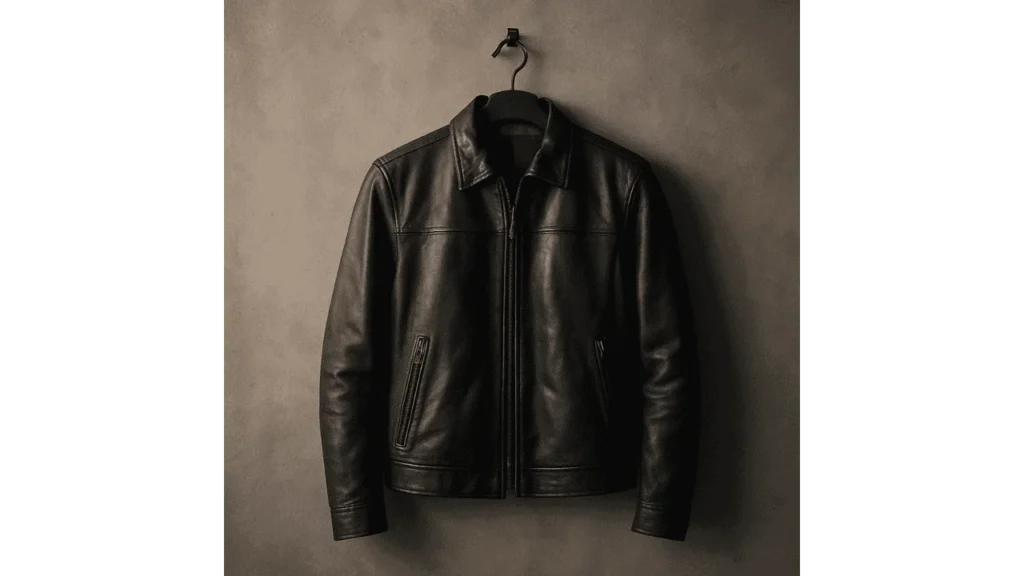If your faux leather jacket is peeling, you can repair it at home using the right methods and materials to restore its appearance. As an expert in fabric and leather maintenance, I recommend solutions like repair dyes, faux leather patches, and repair kits, each suited to different levels of damage. These techniques allow you to cover flaking areas, reinforce worn sections, and reseal the surface for long-term durability. Knowing how to choose and apply the right treatment can prevent further deterioration and save you from discarding a jacket that still has life left in it.

Effective Methods to Follow:
Method 1: Use Repair Dye for Minor Peeling
If the peeling is small and scattered, faux leather repair dye is your best bet. Begin by gently removing loose flakes using a soft cloth or plastic scraper, nothing sharp that could cause more damage. Clean the area with a damp cloth and let it dry. Then, apply a thin layer of repair dye with a sponge or applicator, matching it to your jacket’s color. Let it dry completely before repeating a second or third coat for better blending. Finish it off with a clear protective sealer.
“In our experience, applying two thin coats of repair dye and sealing with an acrylic finish greatly improves adhesion and longevity,” says Lauren Kemp, leather restoration specialist at StyleFix Lab.
Method 2: Apply Synthetic Leather Patches for Larger Damage
For bigger peeled sections, synthetic patches provide a stronger and longer-lasting solution. Cut the patch slightly larger than the damaged area and trim rounded edges to prevent peeling corners. Use a strong adhesive like vinyl cement or fabric glue made specifically for faux leather. Apply the adhesive to the back of the patch, press it firmly in place, and smooth out air bubbles. Allow it to dry flat for 24 hours. Blend the patch edges using matching dye if necessary for a cleaner finish.
Learn More: How to Renew a Leather Jacket?
Method 3: Use a Complete Faux Leather Repair Kit
For more extensive or mixed damage, a faux leather repair kit gives you everything in one box: filler, color tints, applicators, and sealers. Start by cleaning and drying the area, then apply filler compound to fill in gaps or cracks. Once it dries, sand it lightly for a smooth finish. Use the included color tints to match your jacket, then seal it with the finishing solution provided.
“Repair kits are designed for deeper surface damage where just a dye or patch isn’t enough,” explains Mark Olin, materials engineer at RestorWear. “They also provide better color consistency when matching large areas.”
How to Stop Faux Leather from Peeling in the First Place?
Prevention is just as important as repair. Keep your jacket away from sunlight and heat, which dry out the synthetic coating. Always hang it on padded hangers to avoid stress on the shoulders. Use a faux leather conditioner every few months to keep the material supple. And when cleaning, use mild soap and water, never harsh chemicals, which can break down the protective top layer.
Why Faux Leather Peels Over Time?
Faux leather is made from a plastic base, usually polyurethane, applied over fabric. Over time, that top layer can dry out, crack, or flake. Exposure to friction, body heat, and moisture accelerates the process. Lower-quality materials are more prone to peeling, but even well-made faux leather can wear out if not cared for correctly.
Final Takeaways
Fixing a peeling faux leather jacket is completely doable with the right tools and techniques. For small flakes, repair dye works well. For larger damage, use synthetic patches. And for serious peeling, a repair kit gives the best results. Don’t forget preventive care, condition it, clean it gently, and avoid heat to make your jacket last. Taking action early means you can keep rocking your favorite piece instead of tossing it out.
- How to Wear an Oversized Leather Jacket? Style Tips for a Casual Look - August 6, 2025
- How to Fold a Leather Jacket? - August 5, 2025
- How Should a Leather Jacket Fit a Woman? - August 1, 2025



